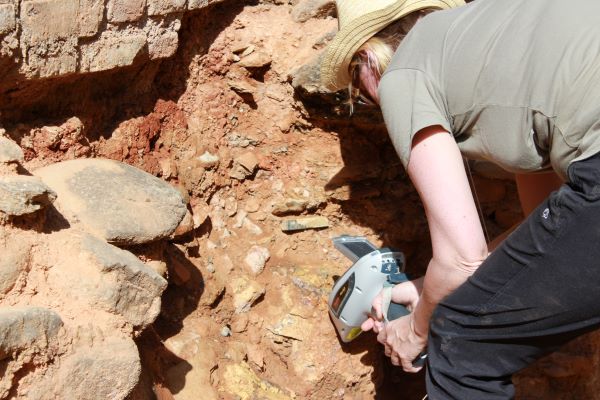PEGG
Post-disciplinary and Experimental Glass Group
Newcastle University is home to a growing community of glass researchers sharing ideas and practice, based in the School of History, Classics and Archaeology and known as PEGG. The community, comprising undergraduate, postgraduate and postdoctoral researchers, is training itself to think in a fresh ‘post-disciplinary’ way about glass and other vitreous materials – developing new research approaches that blend the theoretical, the practical, the analytical, the reflexive and the sensory to enrich understanding of the social dimensions of past technology and production. Individuals bring their personal interests and knowledge to bear within the community’s collective multi-dimensional view of how to define and tackle old and new questions about vitreous materials technology and use, and their place in people’s lives.
Central to PEGG’s work is a vibrant culture of experiment which the University has a wealth of resources to support:
- Dedicated space at Jarrow Hall open-air museum – a unique outdoor resource for experimental reconstruction of glass production technologies and practices and community engagement;
- Excellent links with the National Glass Centre in Sunderland and the enormous variety of creative glass practice hosted there;
- State-of-the-art facilities in the Wolfson Laboratory including hi-spec flameworking torches, a fully programmeable Vecstar furnace enabling controlled firing atmospheres, an annealing furnace, ready access to a wide range of glassmaking chemicals and raw ingredients, optical microscopy, thermocouples, portable XRF with relevant standard reference materials, sample preparation facilities, and ground-breaking development of use-wear analysis techniques as applied to glass;
- EXARN, the Newcastle Experimental Archaeology Research Network led and managed by research students in the School of History, Classics and Archaeology – promoting the study of material culture and ancient technologies through a varied programme of experimental archaeology engaging with all materials, and promoting the study of cross-craft interaction as well as material specialisms including glass.
These resources enable the exact following of recipes and accurate reproduction of all conditions for the making and working of glass, from precisely replicable scientific conditions to studies of the experience of operating a wood-fired furnace over week-long firing episodes.
PEGG community and activities:
Dr Chloe Duckworth
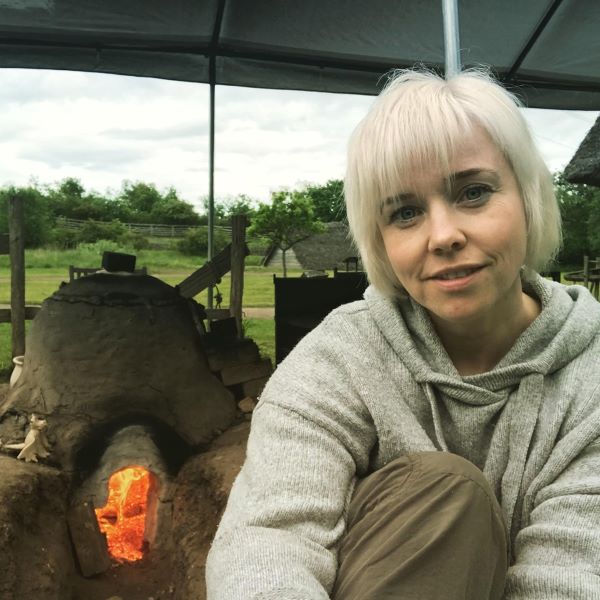
Dr Chloë Duckworth (lecturer in archaeological materials science) is a specialist in the chemical analysis of ancient and historical glass, glass recycling, glass in the Sahara Desert, the social contexts of technology, and a leading expert in the post-disciplinary study of glass from medieval Spain. For the latter, she applies a blend of historical, scientific, experimental, and archaeological research to Muslim, Christian and Jewish contexts. She believes that all researchers studying glass should have experience in its making and working, in order to develop a proper appreciation of its material properties and resist the uncritical development of orthodoxies around the (currently) relatively limited stock of academic publications on historical glass production.
Dr Camilla Bertini
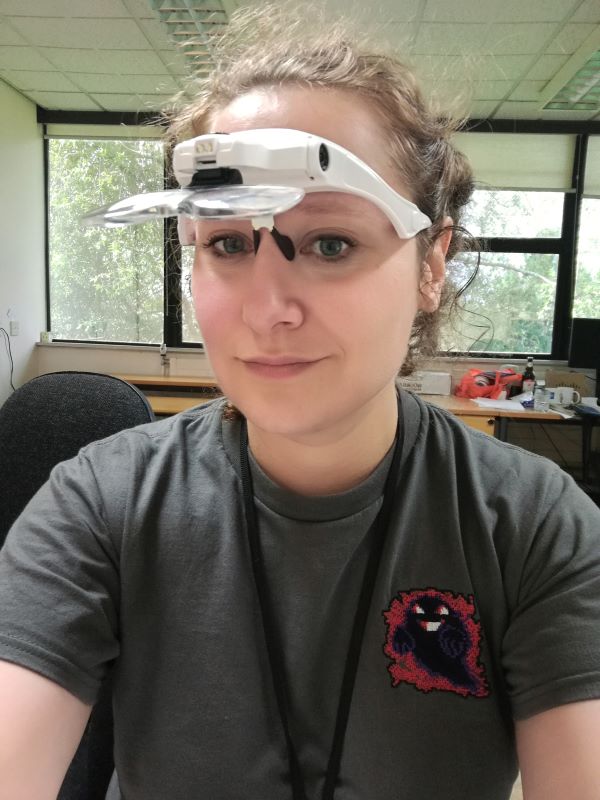
Dr Camilla Bertini (Marie Sklodowska-Curie postdoctoral fellow) is a specialist in the chemical (EMPA and LA-ICP-MS) and isotopic analysis (Sr, Nd, Pb) of ancient and historical glass. Her work explores the identification of glass compositions and their raw materials during the 1st millennium AD focusing in particular on Western European artefacts. She also specialises in the study of secondary glass-working processes, such as recycling and mixing of glass compositions. Her current work is focusing on developing a clear methodology to integrate the traditional approach to the study of glass artefacts (e.g. typological studies) with scientific analysis, historical sources, and data analysis (e.g. GIS and statistical analysis).
Victoria Lucas
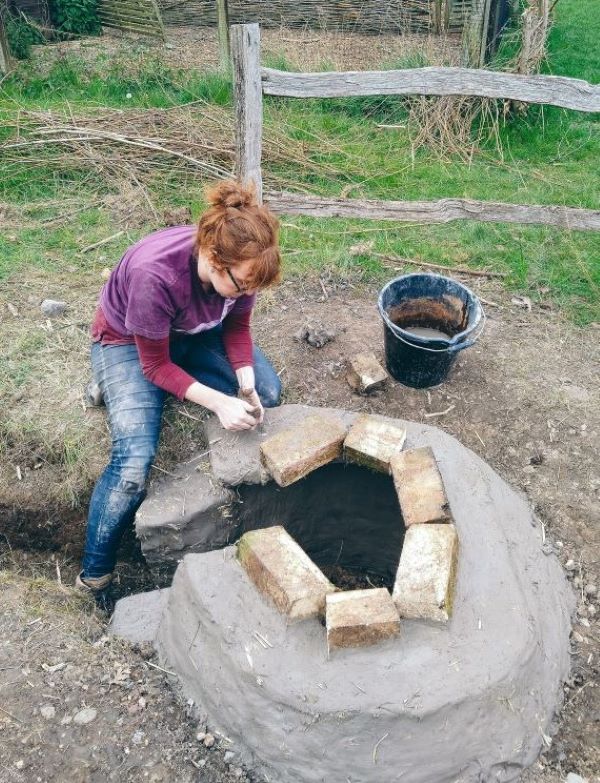
Victoria Lucas (AHRC NBDTP postgraduate student) has, since 2009, specialised in the scientific analysis of ancient glass, with her current PhD research focusing on glass recycling in the early medieval period in England (7th-9th century CE). By employing a combination of chemical analysis and experimental archaeology, she seeks to situate recycling practices in a mid-late Saxon context and to closely link chemical composition to technological practice and the life histories of glass objects. Victoria is at the forefront of this approach, striving to make experimental archaeology an integral part of research methodologies in ancient glass studies. She firmly believes that this, combined with rigorous scientific analysis, can challenge current assumptions about ancient glass object manufacture, providing untapped and otherwise invisible information on technological choices and the people who made them.
Eleonora Montanari
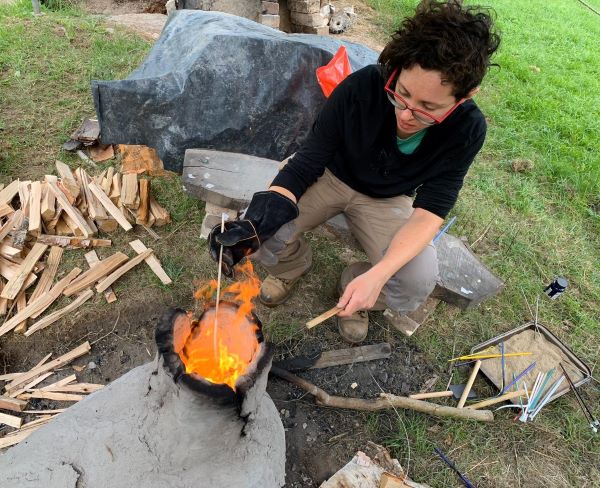
Eleonora Montanari (AHRC NBDTP postgraduate student) is investigating 1st millennium BC glass beads from burial sites in Abruzzo, Italy. Encompassing chemical and use-wear analysis, materiality, funerary archaeology and ethnography, her research attempts to reconstruct the intrinsic symbolic properties of these beads, their production processes and life histories. Eleonora is pioneering the systematic application of use-wear analysis techniques to glass, with a two stranded programme of experimental archaeology combining everyday use and controlled simulated wear experiments. Her holistic view of glass beads bringing together scientific, experimental and theoretical strands puts her at the forefront of multi-disciplinary approaches to glass studies.
John Pearson
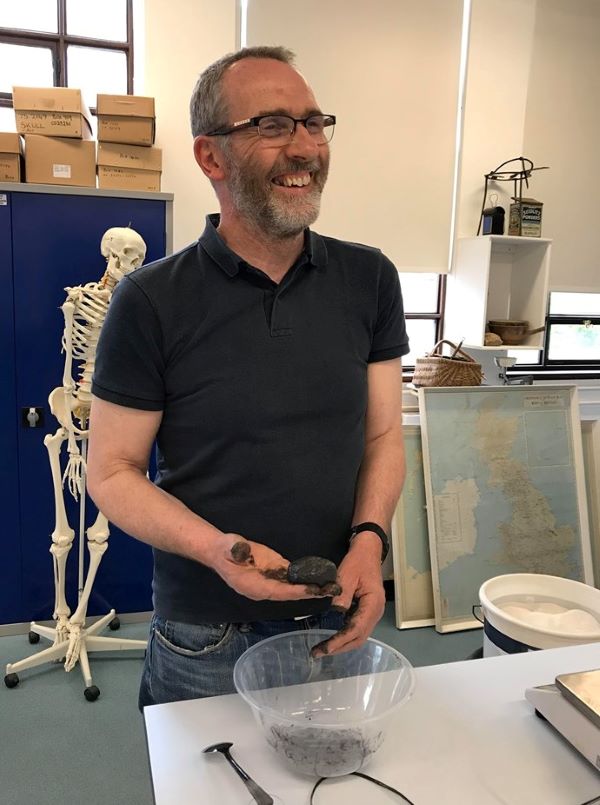
John Pearson’s (AHRC NBDTP postgraduate student) post-disciplinary research will interweave development of hot glass craft skills, ethnographic studies of current glass practitioners in creative and historical traditions, interrogation of archaeological and historical texts, and a sensory and experiential approach to archaeological experiment, to exploit the potential of the 12th century Islamic glass workshop remains at calle Puxmarina in Murcia, Spain, to increase our understanding of Islamic glass workshop technology and practice in medieval Iberia.
These rare workshop remains, now destroyed, provide a tantalizing but enigmatic snapshot of Andalusi craft production. John will be reconstructing aspects of the workshop including a working glass furnace at Jarrow Hall open air museum and conducting a series of glass production experiments there that will allow him to ‘think through making’ to address questions about: range and scale of production; techniques used; workshop organization; management of fuel requirements; pollutants generated; what the workshop’s location in Murcia’s medina can tell us about the socio-political significance of Andalusi glass-related craft production; and the part that production played in stimulating new ways of intellectualizing the material world in early-modern Europe.
José Alberto Retamosa
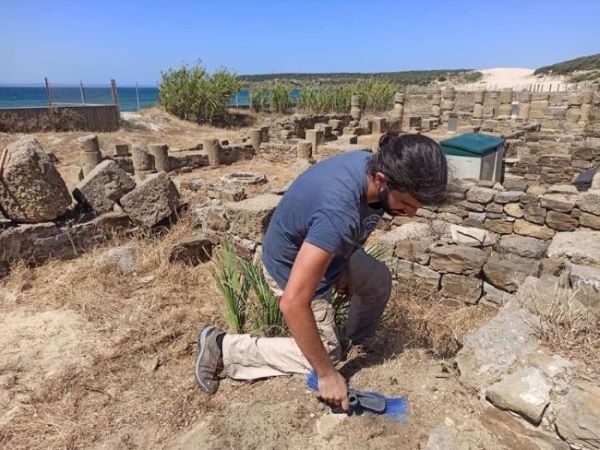
José Alberto Retamosa is a PhD student in archaeology between the University of Cadiz (Spain) and Newcastle University (UK). His research focuses upon Roman and Late Antique glass in halieutic (fishing) contexts, and he is a member of the HUM-440 Gibraltar Strait Circle Research Group. His research investigates the possibility that glass was related to the Roman fish-processing industry, either as a container used in the production, storage, trade or transport of sauces, such as garum, or other fish products. He has focused to date on the salting factories in the Roman cities of Iulia Traducta (present-day Algeciras) and Baelo Claudia (present-day Ensenada de Bolonia, in Tarifa), both located on the Baetic coast of the Strait of Gibraltar.
David Govantes-Edwards
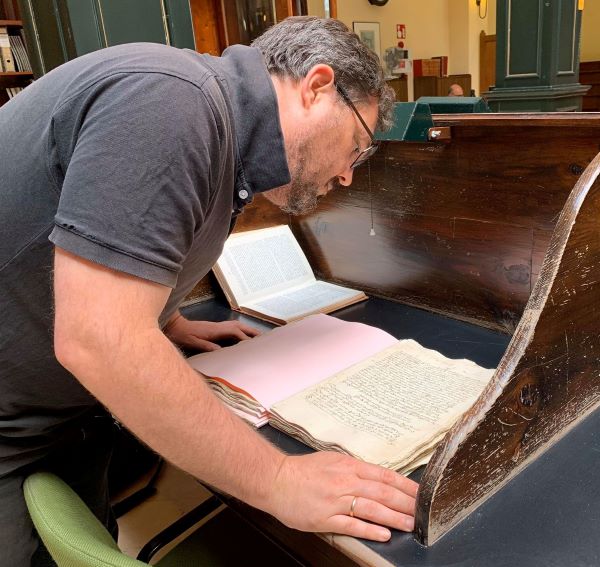
David Govantes-Edwards (associate researcher) focusses his research on the production, circulation and consumption of glass in the Iberian Peninsula between Late Antiquity and the Late Middle Ages, paying special attention to the transmission of technological knowledge. He follows a holistic approach, which includes the use of archaeological, archaeometric and historical sources in order to trace routes of knowledge transmission, map them socially, and examine them within their historical and social framework. He also coordinates several international research projects in Spain, which aim to investigate a number of high-profile archaeological sites with evidence for glass and glazed-ceramic production.
Dr Javier López Rider
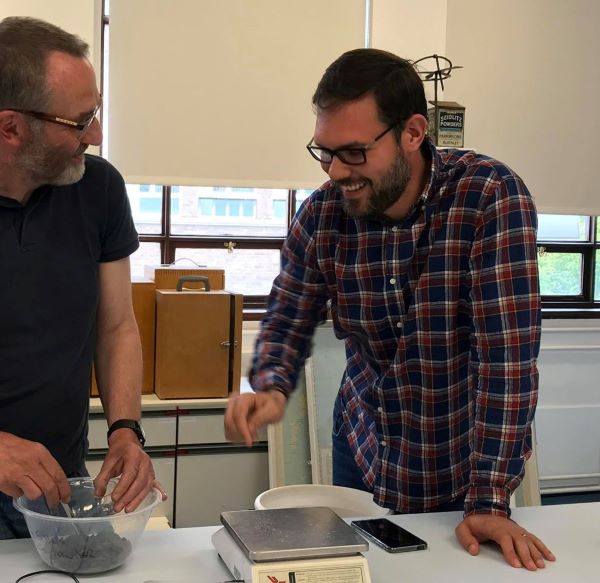
Dr Javier López Rider (external associate) is lecturer in medieval history at the University of Córdoba and member of the HUM-128 Meridies Research Group. His research focusses in two main areas: firstly, the exploitation and use of the rural landscape, the study of settlement and its interaction with the environment and nature in medieval Spain; and secondly, the science, techniques and technology of the Middle Ages through the study of medieval technical recipes and treatises (ingredients, amounts, properties of substances, etc.), archaeological experimentation (reconstructing recipes such as wood varnish, stain removers, soaps, glass, gunpowder, body creams, hair dyes, perfumes, etc.) and material culture.
Dr Almudena Velo Gala
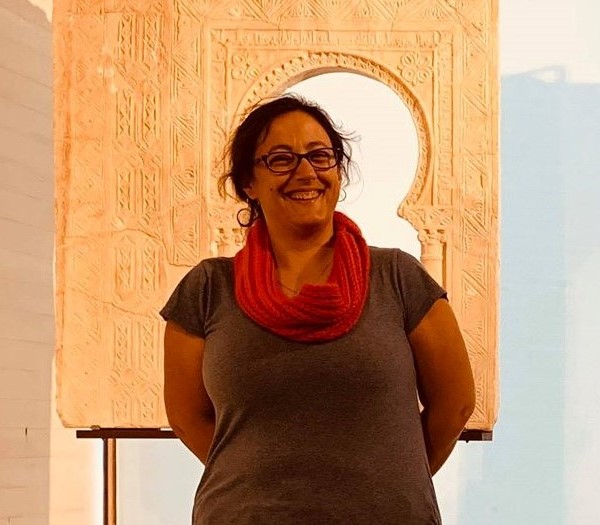
Dr Almudena Velo-Gala (external associate) is an archaeology researcher on ancient glass and a specialist in the restoration of archaeological material. Her research works focus on the study of glass in Spain from Roman times to the 17th century, applying a work methodology that addresses traditional studies (context analysis, typological-technological, archaeological drawing) and archeometry. The results of her investigations are focused on highlighting the important value of knowledge of glass in archaeological sites where it is documented. This material allows the reconstruction of aspects related to architecture, certain practices in public and private environments, and the development of a type industry that reached a significant production in Spain, about which we still have little knowledge.
See our Gallery of PEGG researchers in action

Chloe Duckworth adding straw to clay for furnace construction
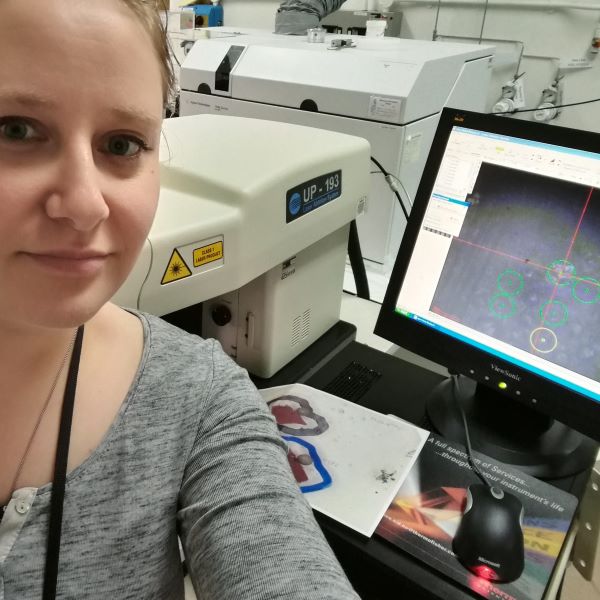
Camilla Bertini conducting LA-ICP-MS analysis on glass at British Geological Survey

Expert bead-maker Eleonora Montanari reconstructs Iron Age Italian beads
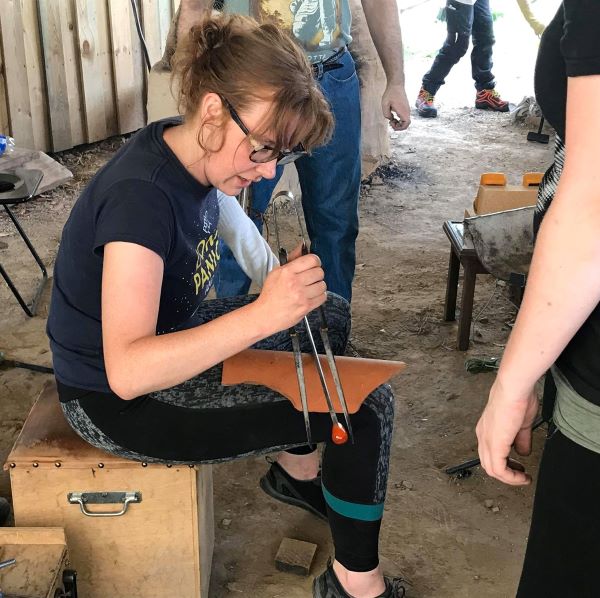
Victoria Lucas works glass at Villa Borg, Germany
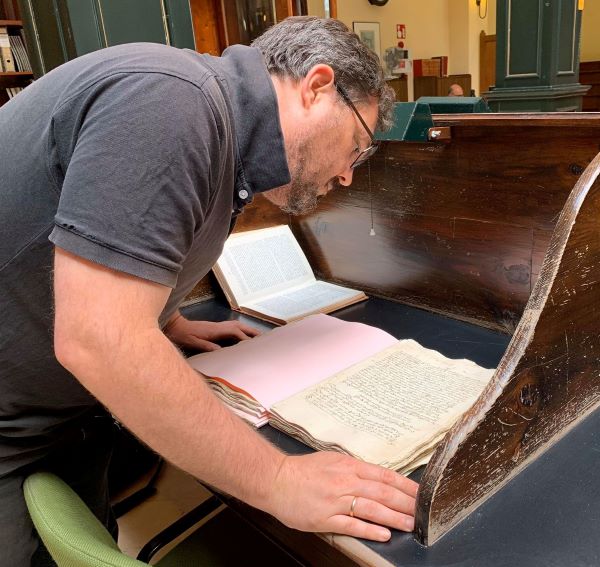
David Govantes Edwards inspects a 14th century manuscript for information on Spanish glass production
 and John Pearson discussing the experimental reconstruction of medieval glass recipes in the Wolfson Laboratory600.jpg)
Javier López Rider (right) and John Pearson discussing the experimental reconstruction of medieval glass recipes in the Wolfson Laboratory
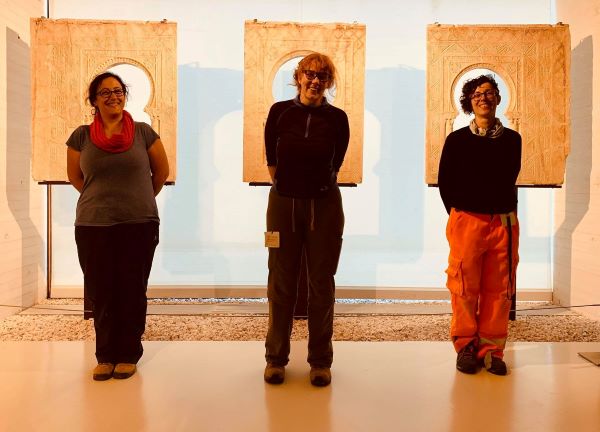
Three members of PEGG on a visit to the museum at the 10th century Islamic site of Madinat al-Zahra
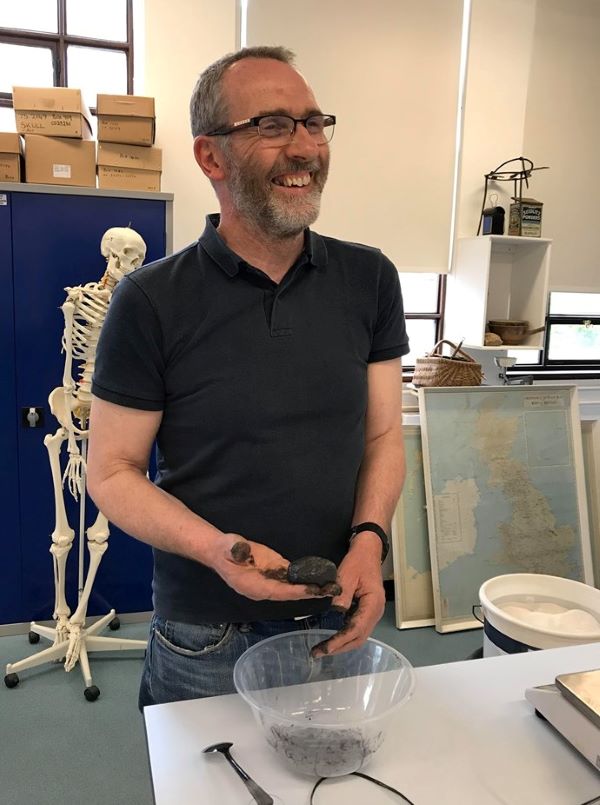
John Pearson forms loaves of glassmaking ingredients, following a medieval recipe
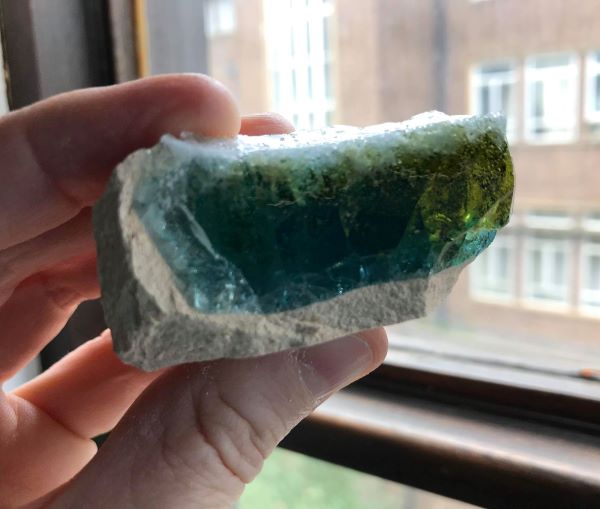
An example of glass formed in a single stage using our bespoke furnace in the Wolfson Laboratory

Chloe Duckworth collecting glassmaking plants in southern Spain
Using pXRF to detect pollution at a glaze furnace at the world-famous Alhambra, Granada
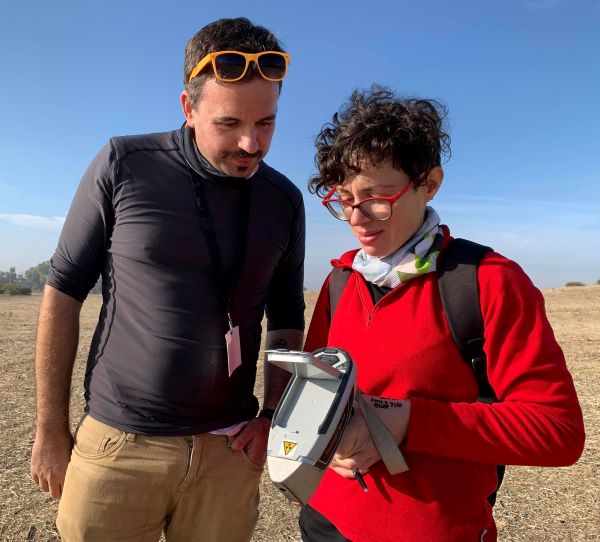
Eleonora Montanari and colleague Derek Pitman check the results of pXRF survey at Madinat al-Zahra
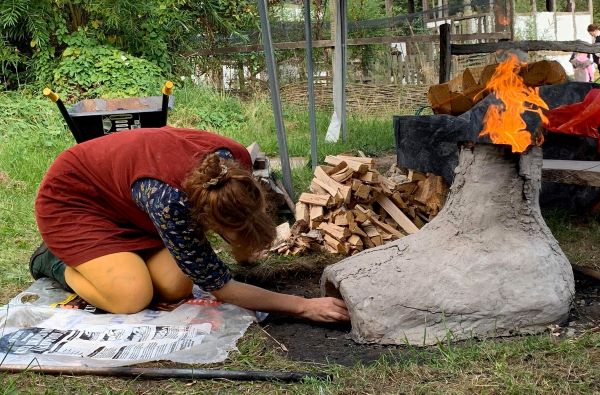
Expert fire manager Victoria Lucas tends to a bead furnace
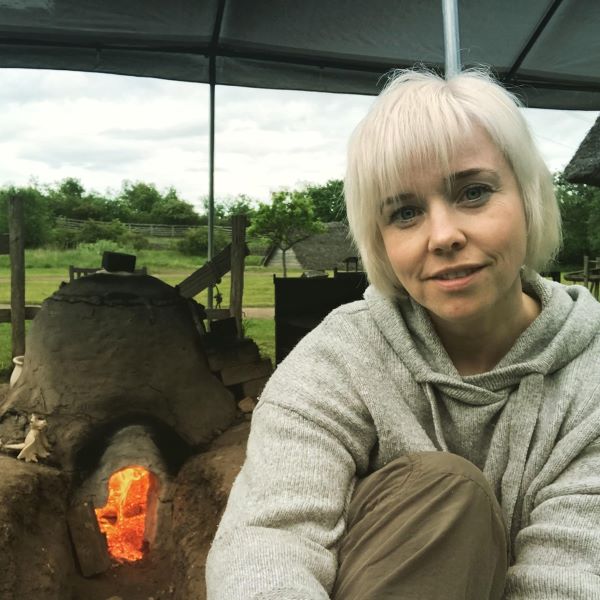
Chloe Duckworth takes an overnight stoking shift at the furnace in Jarrow Hall
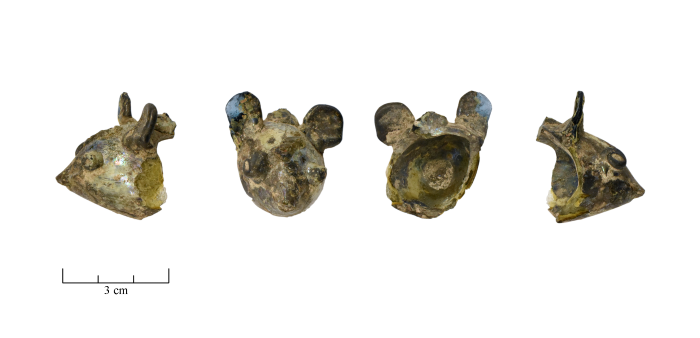
Medieval glass mouse head, photographed by Almudena Velo Gala
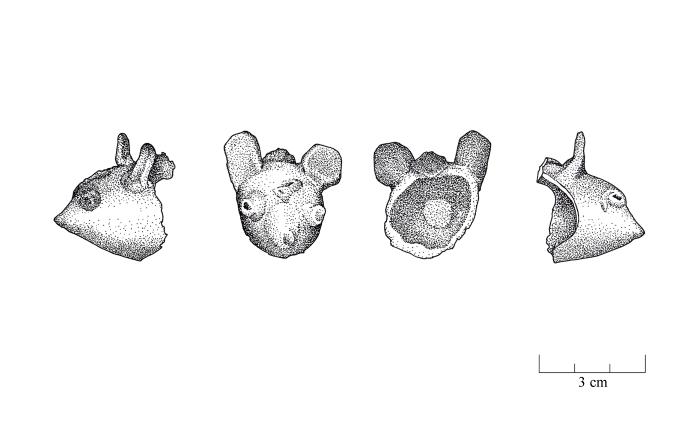
Medieval glass mouse head, drawn by Almudena Velo Gala
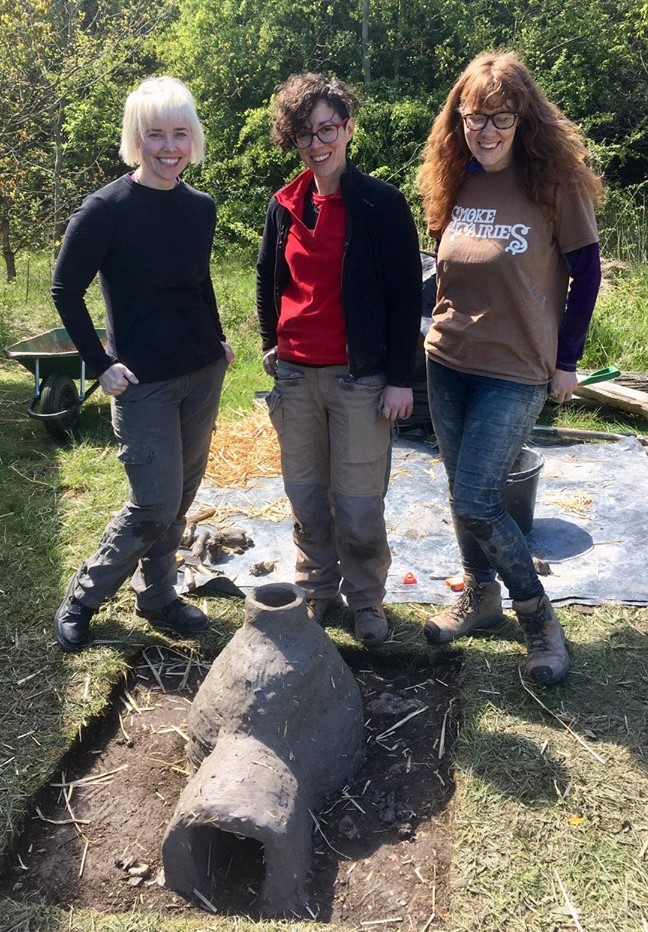
Chloe Duckworth, Eleonora Montanari, and Victoria Lucas stand behind one of the reconstructed bead furnaces
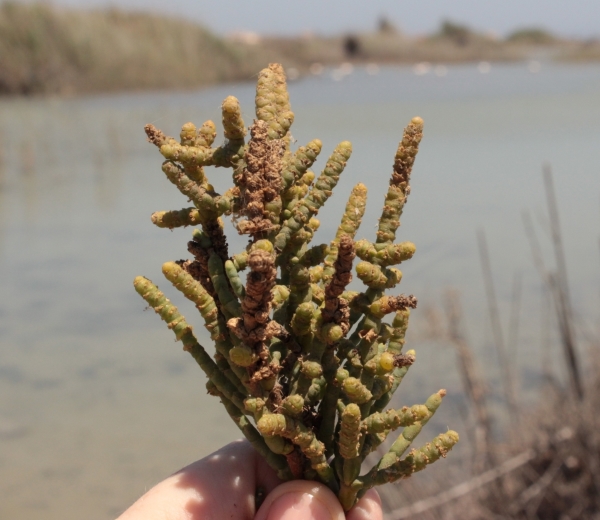
Gathering glassmaking plants
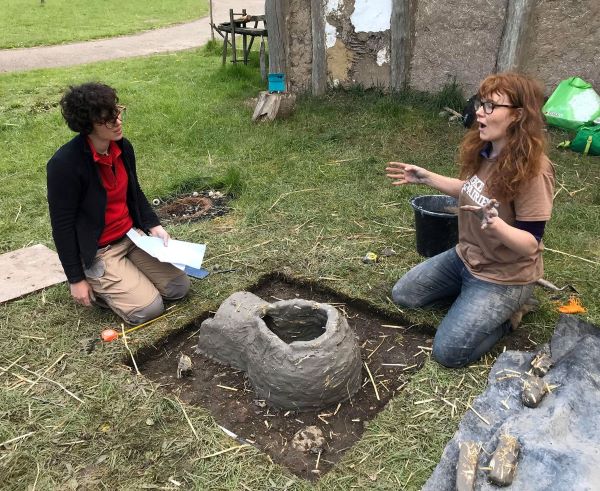
Eleonora Montanari and Victoria Lucas discuss strategies for building replica Iron Age bead furnaces

Eleonora Montanari and Victoria Lucas check the dimensions of a reconstruction bead furnace at Jarrow Hall
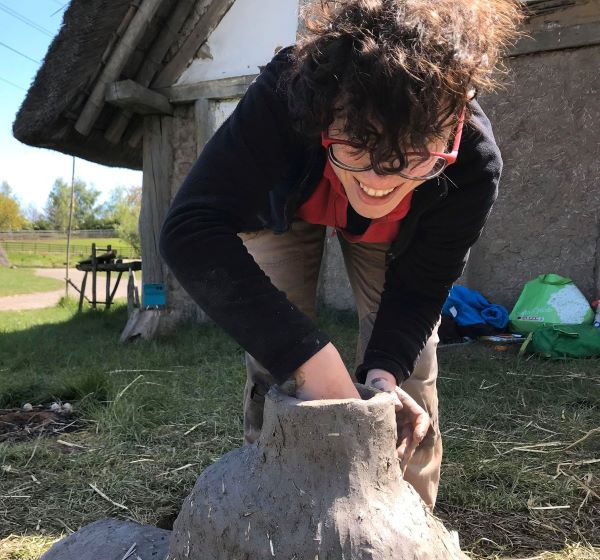
Eleonora Montanari finishes construction of one of her replica bead furnaces
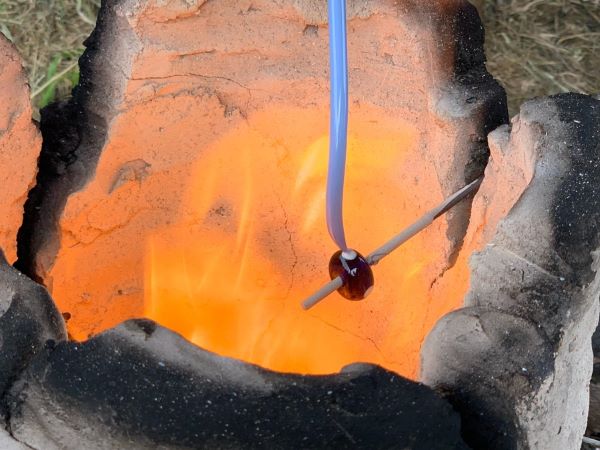
Reconstructing Iron Age Italian glass beads
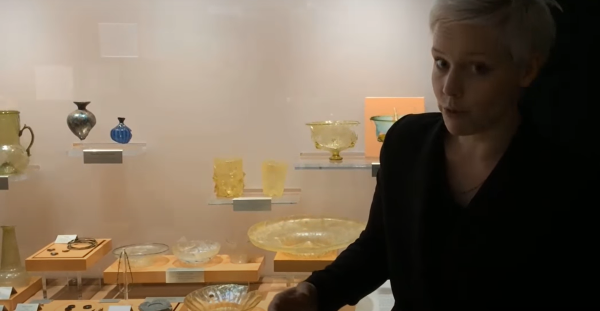
Investigating glass in Spanish museums
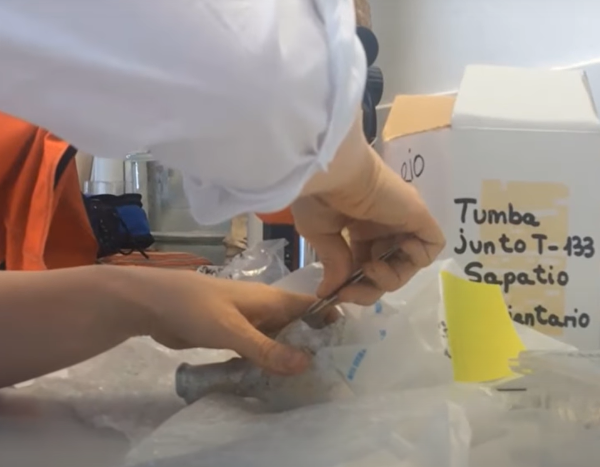
Chloe Duckworth sampling late Roman glass in Ecija, Spain
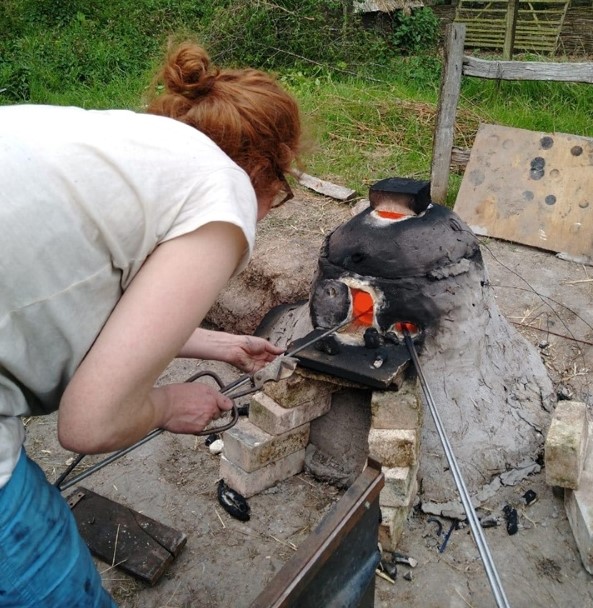
Victoria Lucas samples her recycled glass
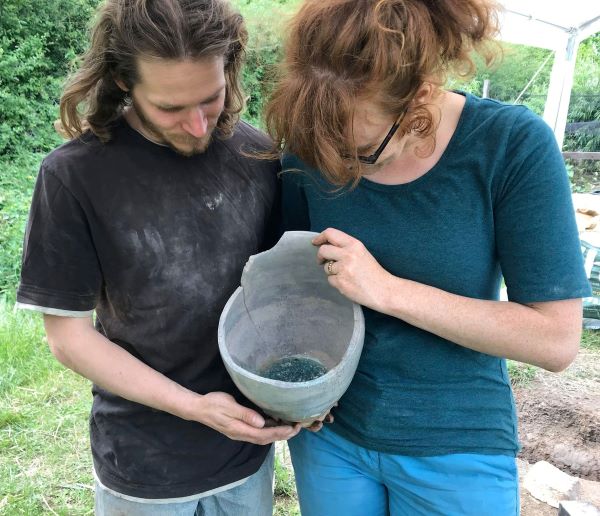
Remains of recycled glass in a replica Anglo-Saxon crucible
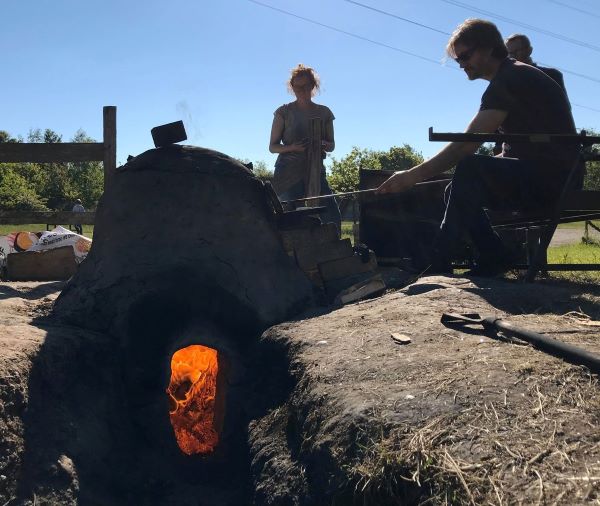
Glassblower Colin Rennie tests the properties of Victoria Lucas's recycled glass
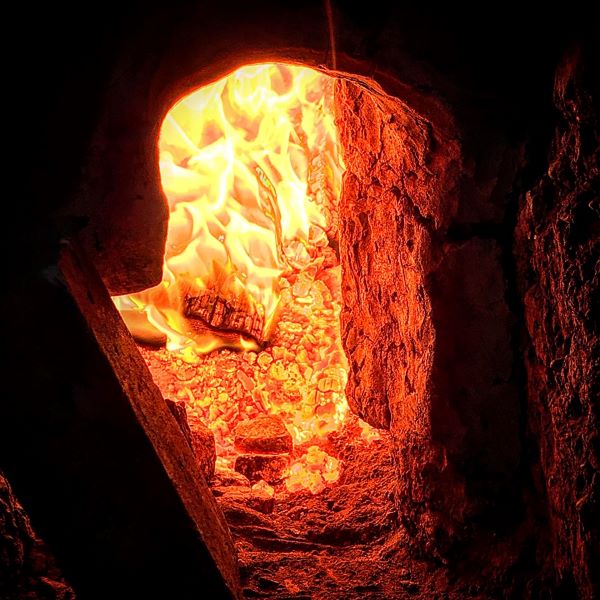
The warm glow of the stoke-hole in one of our wood-fired furnaces
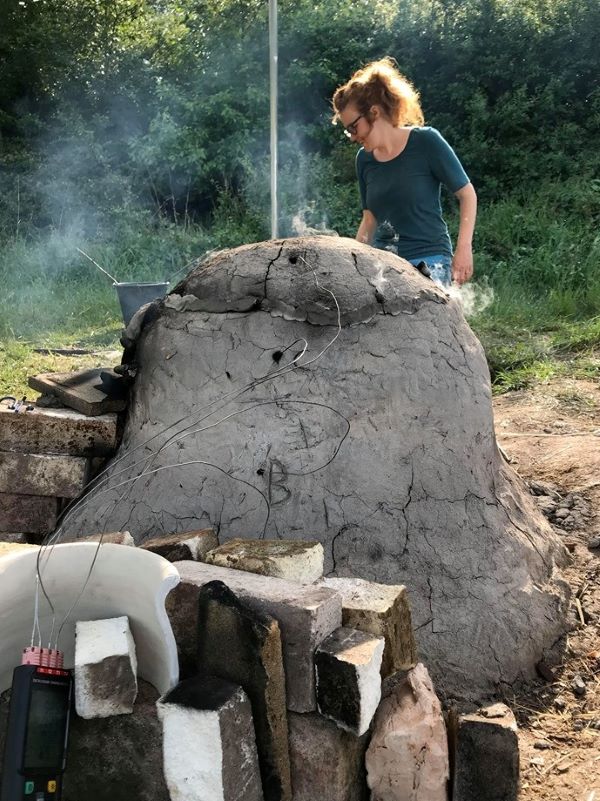
Thermocouples used to measure the temperature regime in Victoria Lucas's reconstructed furnace

Students excavating medieval workshops at the Alhambra, Granada

Newcastle University students try their hands at glassworking at the National Glass Centre, Sunderland
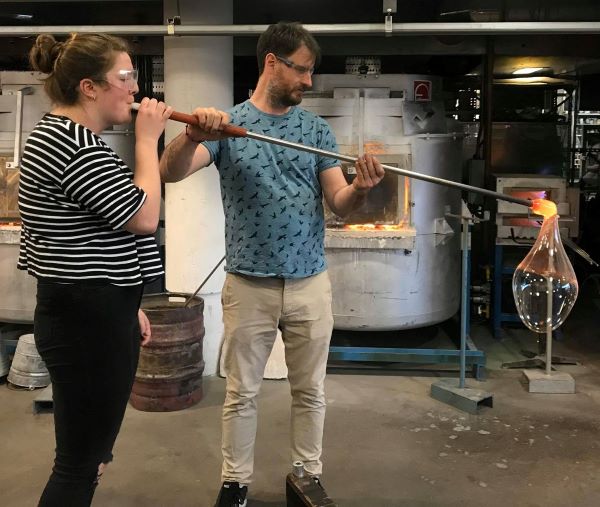
Master's student Amy Farrer blows glass at the National Glass Centre in Sunderland
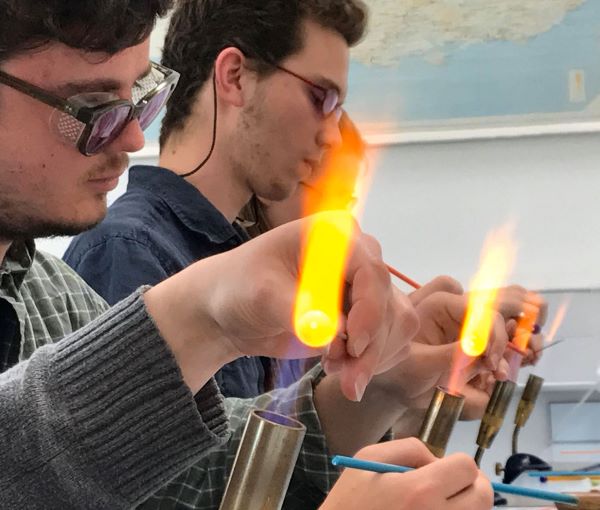
Newcastle University students take a lesson in flame-working glass beads from expert Mike Poole in the Wolfson Laboratory
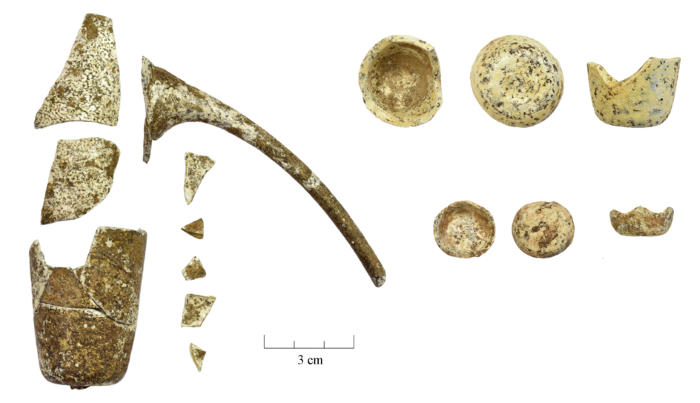
Fragments of a glass alembic, photographed by Almudena Velo Gala
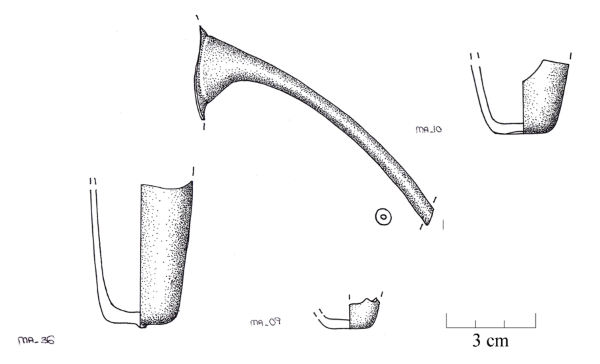
Fragments of a glass alembic, drawn by Almudena Velo Gala
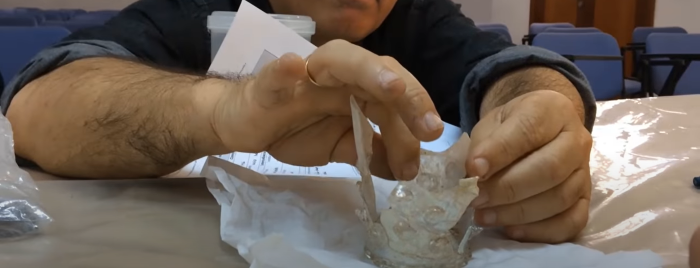
Medieval glass investigations at the Museum of Jerez
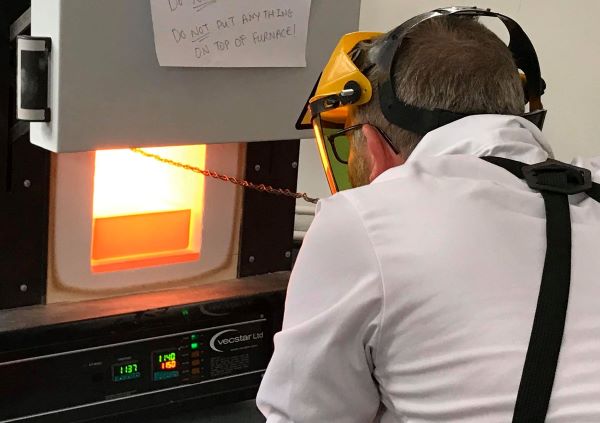
John Pearson tests the progress of his glassmaking experiment in our bespoke furnace in the Wolfson Laboratory
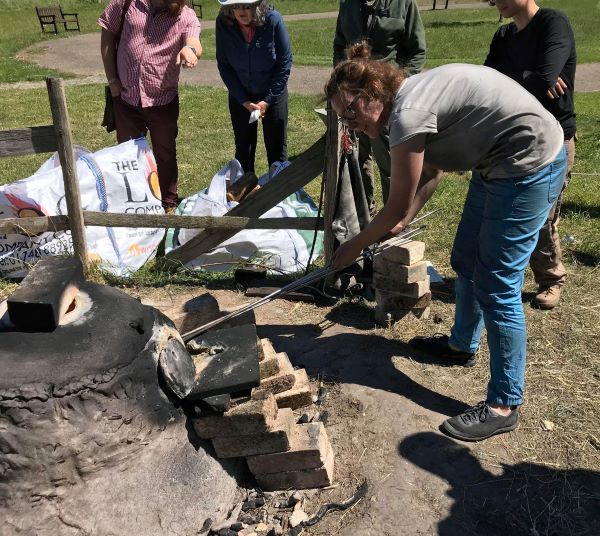
Members of the public watch Victoria Lucas working at her reconstructed glass furnace in Jarrow Hall
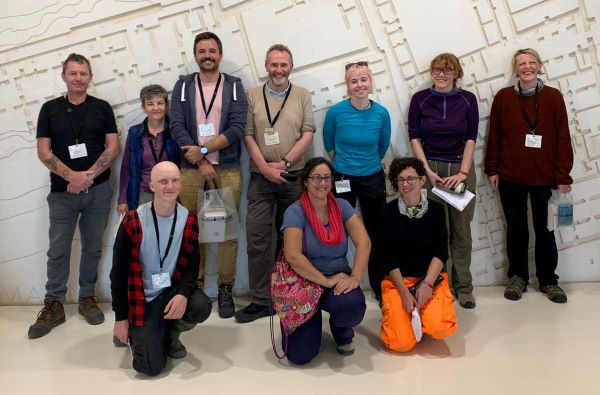
Members of PEGG and colleagues from Bournemouth University working at Madinat al-Zahra, Spain
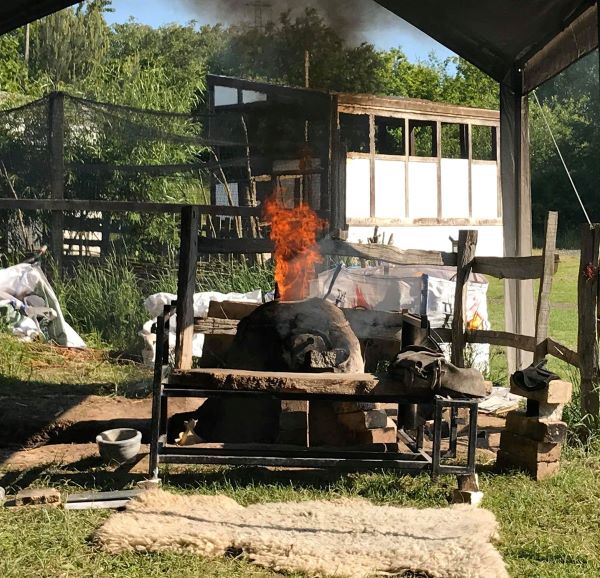
Victoria Lucas's reconstructed glass furnace at Jarrow Hall
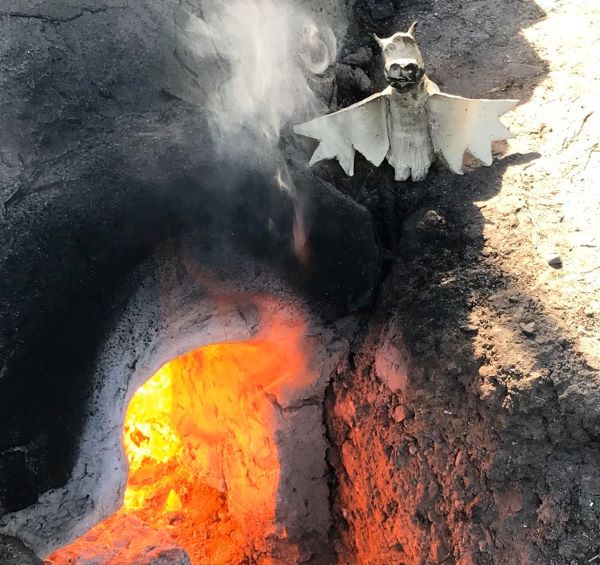
Our furnace mascot, Smokey the Dragon, keeps watch over the stoke-hole

